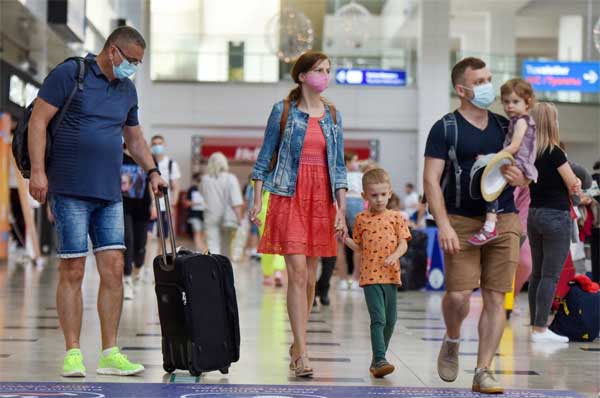Monday, July 18, 2022

Summer is in full swing in Paris and the entrance square to the Louvre is busy with vendors selling water or Eiffel Tower souvenirs.
Among them, US tourist Chris Walkley is enjoying his first visit to France, taking selfies with his girlfriend by the art museum’s glass pyramid.
For Walkley, traveling to France has been a symbol of getting his life back to normal after two years of restrictions and disruptions caused by the pandemic.
For France, Walkley’s presence is a symbol of optimism.
He’s just one of the tens of thousands of Americans expected to visit Paris this summer, bringing a widespread sense of relief to a tourism industry battered by COVID-19 and the sanctions-induced loss of the wealthy Russians who regularly flock to its hotspots.
North America is projected to be the biggest contributor to the Parisian tourism market this summer, according to the city’s government, with booking levels almost back to pre-pandemic 2019 levels.
The Americans are doing the job, said Frédéric Hocquard, Paris Deputy Mayor for tourism. It means that they are coming back en masse and with a lot of money to spend.
Even outside of Paris, from north to south, tourist workers and government officials across France are chanting the same enthusiastic message — the Americans are back!
On average, American tourists, mostly visiting in groups, are each spending $402 (400 euros) per day in France, bringing the budget for a 10-day visit to a stunning $7,687, way ahead of any other foreign tourists.
The Americans are especially important this year for the south of France along the Mediterranean, whose beautiful coastlines have long been a paradise harboring many wealthy Russian vacationers.
The department of Alpes-Maritime, home to the sun-kissed likes of Nice and Cannes, was projected to lose $50.4 million in 2022 due to the absence of the Russian tourists who descended on towns like Saint-Jean-Cap-Ferrat, according to a report published by the area’s Chamber of Commerce and Industry in March as it evaluated the impact of war in Ukraine.
But those negative forecasts have failed to play out, the chamber of commerce said, acknowledging that the summer season is looking quite good.
The unexpected turnaround was confirmed by local officials and hotel owners on the ground in the French Riviera.
It is true that there is less Russians for sure but they have been replaced by all the other people, said Jean-François Dieterich, mayor of Saint-Jean-Cap-Ferrat.
The small town of fewer than 1,500 residents has six out of the 61 Russian-owned properties frozen by the French government, according to the French Finance Ministry.
Before the pandemic, Russian tourists represented 20% to 25% of the hotel’s customers during summer months, but this year all were gone due to sanctions imposed on Russia.
Mercadal recalled the chaos that erupted shortly after Russia invaded Ukraine — Russian guests staying at the hotel had to pay with cash because their credit cards became useless after their country was kicked out of the SWIFT international payment system.
Now, Americans are flocking to Mercadal’s hotel. Usually US visitors represent around the same share of clientele as Russians before the pandemic, but this year for June alone, the share of American guests jumped to 42%.
The war in Ukraine has also impacted exchange rates, driving down the value of the euro to its lowest levels against the dollar since 2002, meaning that traveling to Europe has become a lot cheaper for Americans.
What’s going on this year was this travel revenge, Mercadal said, referring to the phenomenon of people splurging on big trips as a way of making up for the COVID-19 enforced sequestrations of the past two years.
It’s a good surprise and it compensates, largely, [for] the lack of Russian clientele, he adds.
Tags: COVID-19 pandemic, US tourists
Saturday, July 16, 2022